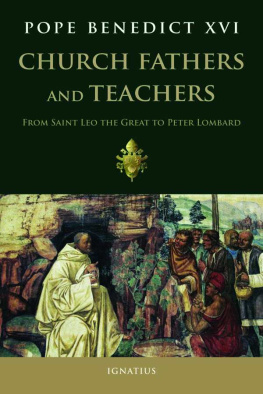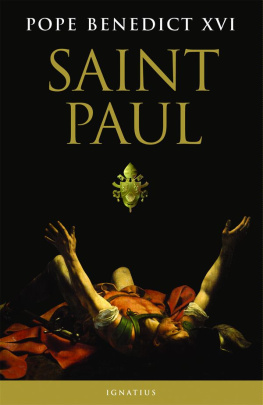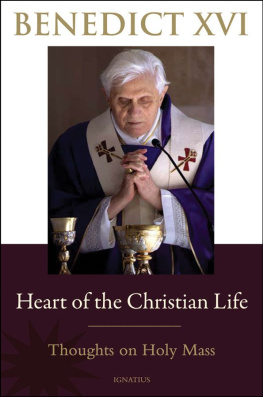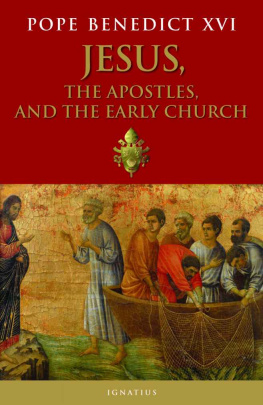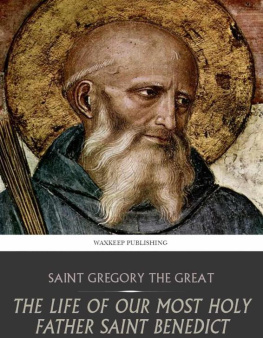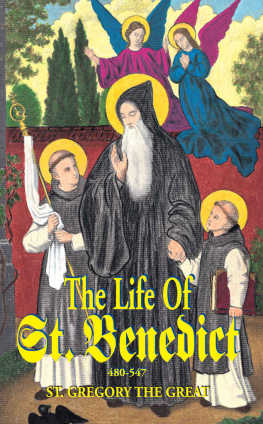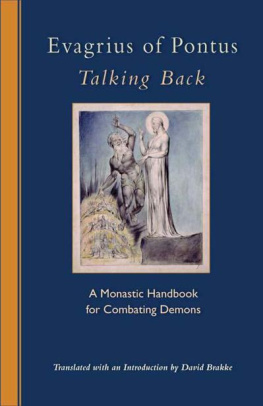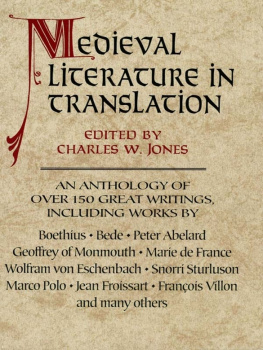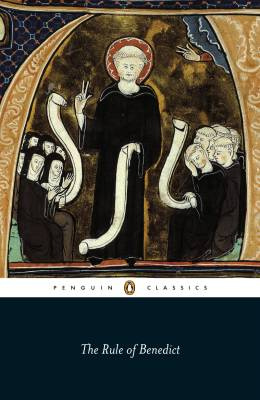
EARLY CHRISTIAN LIVES
CAROLINNE WHITE read Classics and Modern Languages at St Hughs College, Oxford, and then wrote a doctoral thesis on Christian ideas of friendship in the fourth century, published in 1992. After two years spent in South Africa, teaching Latin at UNISA in Pretoria, she returned to Oxford, where she divides her time between research projects and tutoring in medieval and patristic Latin literature. She has worked on the supplement to the Liddell and Scott Greek Lexicon and the Bodleian Incunable catalogue, and she is now assistant editor on the Dictionary of Medieval Latin from British sources. She has also published translations of the correspondence between St Jerome and St Augustine, some of Gregory of Nazianzus autobiographical poems, a selection of Early Christian Latin poetry and excerpts from Augustines Confessions.
Early Christian Lives
Life of Antony by Athanasius
Life of Paul of Thebes by Jerome
Life of Hilarion by Jerome
Life of Malchus by Jerome
Life of Martin of Tours by Sulpicius Severus
Life of Benedict by Gregory the Great
Translated, Edited and with Introductions by
CAROLINNE WHITE
PENGUIN BOOKS
PENGUIN BOOKS
Published by the Penguin Group
Penguin Books Ltd, 27 Wrights Lane, London W8 5TZ, England
Penguin Books USA Inc., 375 Hudson Street, New York, New York 10014, USA
Penguin Books Australia Ltd, Ringwood, Victoria, Australia
Penguin Books Canada Ltd, 10 Alcorn Avenue, Toronto, Ontario, Canada M4V 3B2
Penguin Books (NZ) Ltd, 182190 Wairau Road, Auckland 10, New Zealand
Penguin Books Ltd, Registered Offices: Harmondsworth, Middlesex, England
This translation published in Penguin Classics 1998
1 3 5 7 9 10 8 6 4 2
Translation, notes and introduction copyright Carolinne White, 1998
All rights reserved
The moral right of the translator has been asserted
Except in the United States of America, this book is sold subject
to the condition that it shall not, by way of trade or otherwise, be lent,
re-sold, hired out, or otherwise circulated without the publishers
prior consent in any form of binding or cover other than that in
which it is published and without a similar condition including this
condition being imposed on the subsequent purchaser
EISBN: 9781101490433
CONTENTS
EARLY CHRISTIAN LIVES
AD 250 | Paul withdraws to Egyptian desert
| 
| Persecutions under Decius and Valerian |
AD 300
|
Hilarion settles as monk in
Palestine
Pachomius sets up ascetic
community in Egypt
Malchus joins monastic
community
| 
| 
|
Persecutions under Diocletian and
Maximin
Constantine becomes emperor
|
AD 350 | Basil tours eastern monasteries
Martin leaves army | 
| 
|
Martin made Bishop of Tours
Augustines conversion | Julian the Apostate becomes
emperor
Theodosius the Great becomes
emperor |
AD 400 | Cassian moves to Gaul and writes
Conferences and Institutes |
Visigoths under Alaric sack Rome
|
AD 450 |
AD 500 | Benedict retires to Subiaco | 
| Theodoric the Ostrogoth becomes
ruler of Italy
Boethius executed at Pavia
Justinian becomes emperor |
Benedict moves to Monte Cassino |
AD 550 | 
| Totila king of the Ostrogoths
overruns Italy |
Lombards move south into Italy |
AD 600 | Gregory becomes pope |
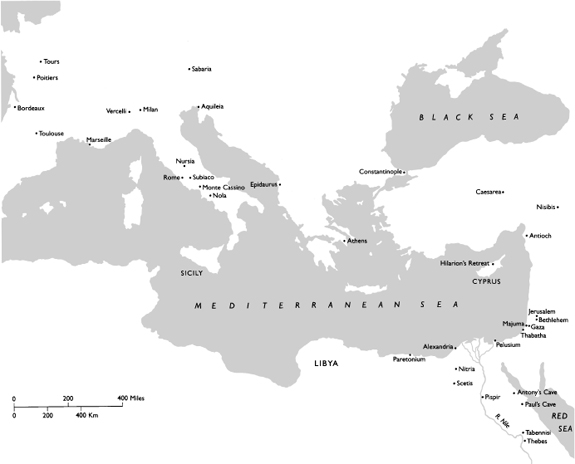
The World of Antony, Paul, Hilarion, Malchus, Martin and Benedict.
GENERAL INTRODUCTION
The Early Development of Monasticism
Martin Luther, looking back over the development of Christian monasticism during the Middle Ages,cloak; Jerome claims to have heard the story of Malchus life from Malchus himself while living in Syria in the 370s; Sulpicius Severus travelled from south-west France to visit Martin at Tours; while Pope Gregory the Great, although he was writing almost half a century after Benedicts death, acquired much of his information about Benedicts life and miracles from people who had known Benedict personally.
All these biographies share a monastic theme, providing information about the lives of men who were the founding fathers of monasticism in both the eastern and western areas of the Roman Empire. Nowadays, perhaps, the term monasticism primarily conjures up ideas of life in an enclosed community, lived according to a rigid pattern, often in magnificent buildings amidst beautiful countryside. However, such forms of monasticism developed only gradually, with Benedict in the sixth century playing an important role in the institutionalization of the monastic life in the west. It is true that the origins of Christian monasticism are obscure there they spent seven years, exposed to frost, wind and rain, avoiding all contact with the outside world and living off the spoils of hunting.
Why did people at this period opt for such a radical lifestyle? In the case of Basils family, it was clearly a question of escaping the threat of martyrdom and maintaining their dedication to Christianity. As for the period after Constantines conversion and his edict of toleration in 313 which promised religious freedom, the period when the ascetic life seems to have become increasingly popular, the principal theory for this sudden popularity is that many were driven by a desire to find a new means of proving their dedication to Christ at a time when the persecution had been replaced by tolerance and martyrdom by privilege. Certainly this may have been one motive, but it would be wrong to suppose that after 313 life as a Christian suddenly became a soft option. Christians could still be subjected to pagan attacks, particularly under the anti-Christian emperor Julian (3613), but also to persecution by heretics, particularly the Arians, Orosius, who wrote his History against the Pagans in the early fifth century at Augustines suggestion, mentions the monks as a particular target of the persecutors. He writes:




